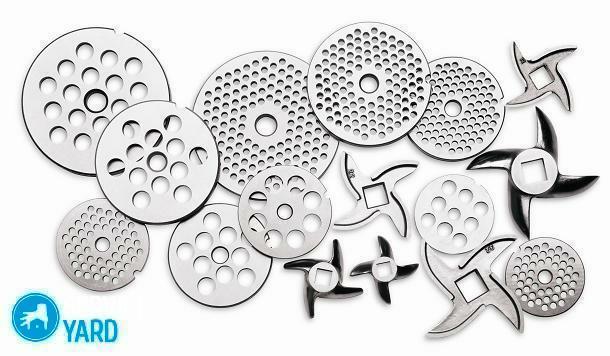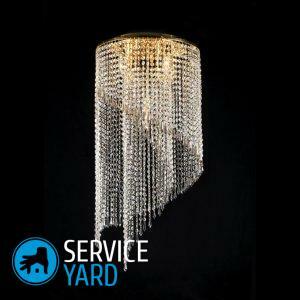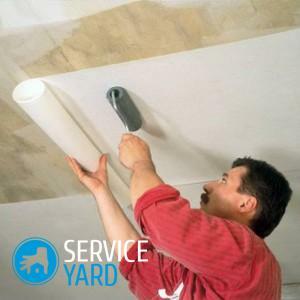Not long ago, wicker fences were the main way to separate private estates. Underlined old and naturally occurring raw materials allow the fence organically fit into the countryside. For this reason, they demand large areas around settlements and between them, as well as in parks and various objects of natural character. If you need to create a rustic ambiance and atmosphere of an old yard - in the first place is to take care of the outside of the fence a. Depending on the direction of the rods, wicker fence is divided into horizontal and vertical. The first option is usually more dense and it takes a lot more branches. Popular and living fences. They look fresh, and sometimes additionally documented hedge of lush plants. Wattle refers to the type of plants that can be done without special education.
Content
- Features
- Where to use the fence
- Selection and sizing material
- Types of fencing netting
-
Step-by-step instruction
- Materials and tools for fence construction
- preparation of the base
- preparation rods
- horizontal fence
- vertical fence
- decoration
- Planting a living fence
- plastic fence
- Braided fence boards
- How to care for the fence ready
- conclusion
Features
Ordinary fence is easy barrage of shoot and flexible branches. This fence distinguished chaotic lines and artisanal structure. The material is used in its natural form, almost without being processed. Wicker fences -. Mainly decorative designs, because rarely are raised to a height of more than 1.5 m are encountered and high modifications, but this is not always justified, since the large size does not solve the problem of the fragility of the material itself, but also in a large fence will be more slots and they basically become larger.

The above means that part of the nuances of repair of the fence, as well as a large open area for viewing by unauthorized people. The main advantages of the fences are cheapness and ease of Consumables. Wicker fences are relevant to the present day, and combined with many styles of design area.





Where to use the fence
So shield small plots of land. Pletnev is also used as an additional fences in private ownership. Low options erect another and along the paths. They are often used to separate the gardens, vegetable gardens and flower beds from the rest of the space. Wattle well demarcated area of two neighboring plots. Low and medium-sized fences will not throw a big shadow in any direction. The branches are ideal for the construction of partition walls used to zoning area. So equip and summer playgrounds, pavilions, terraces. Fences and used to decorate the area for barbecue. Low hurdle fences can be seen in the thematic restaurants. Fences - an important element for the expression of ethno-style. Country houses and other possessions wicker fence combines perfectly with the rest of wicker objects - chairs, rocking chairs and tables.






Selection and sizing material
Such fences are usually willow weave or hazel. These plants have long, smooth and flexible branches with little or no transverse processes. This material is characterized by symmetry, it is an important plus. Sometimes use a cane stalks, as they are well bent, but the design turns brittle. Particularly durable bamboo, but it is necessary to order. To create a wicker products used vine bark. The calculation of the required amount of material is made "by eye". One armfuls enough for fence height and 50 cm long. This value is not constant and can be deflected in the direction of decreasing or increasing as the diameter of the rods is different, and weaving density is adjusted individually. Fence can be erected many of the young twigs of shrubs and trees, but only at a certain length - 1 meter. In this work will be difficult, and the weaving itself - chaotic.
Other details:
- In the role of a support used large flat branches 4 cm in diameter. It is appropriate to use metal rods, planks, round timber, if they do not spoil the overall picture and will not stand out much.
- Step between the rungs is usually 0.3-0.5 meters.
See also:Decorative fences 75 photo examples and ideas

Types of fencing netting
weaving variants are distinguished by several criteria. Depending on the height of it is high (over the fence height 2m), medium (1-2 m) and low (below 0.7 m). The first type involves the creation of weaving capital structures, e.g., an external fence. The second is used for the separation of areas and separation of small suburban areas. The third type is associated with the creation of decorative walls, fencing flower beds and walkways. Depending on the principle of combining the elements distinguish the horizontal, vertical and oblique braiding, as well as less common circular and chess. In the first case we are talking about laying long rods perpendicular to the vertical supports. In the second horizontal prozhiliny serve as a basis for the vertical placement of the branches. Inclined embodiment assumes diagonal placement with a pitch up to 0.3 m. In the method for setting the weaving isolated poles, producing directly on the support, and a section where the web is weaved separately and then placed between pegs.






Step-by-step instruction
The fence is constructed in several steps:
- Preparation of materials: twigs of various thickness separately for the base and for the web.
- Preparation tools.
- Calculations in the area.
- Creating a base.
- Mounting rods on the substrate.
- Elimination of defects immediately after the establishment of the fence.
First of all addressed the issue with the selection of raw materials. The final decision should primarily affect the planned configuration and purpose of a wicker design. Materials need to collect or purchase. The first option is preferable, since it stems collection does not take much time. However, in the year for that, there are two small period of time. Twigs collected sorted depending on their thickness. Large branches for poles necessarily processed. Then determines the exact location for the basics. Pegs hammered into the prepared ground at the desired depth. What happens next depends on the option selected weave. The two main ways: horizontal and vertical. The first is used more often. When the fence is sufficiently dense, it will only have to decorate. Traditional options decor a little, just two or three, but the ways of decorating the fence more.

Materials and tools for fence construction
The first thing you need to decide what type of plants will provide the basis for future design elements. Recommended to choose between the willow and hazel. Necessary smooth, flexible and long branches. Minimum thickness - of about 1 cm. The role of the support given to the branches with a diameter not less than 4 cm. Instead, they allowed the use of round timber, and iron rods, although due to a violation of natural species that option is undesirable. The bars should be collected in early spring or in the autumn months. They need to be softened in water and purified from the bark. In addition, you need to collect tools. To create a hurdle fences need such tools as nails, screwdriver, construction scaffold or thread, wire, sledge hammer or big roulette, mallet, saws for metal and pruner.

preparation of the base
The base can be made from almost any type of wood. Of material need to get sharpened stakes to be inserted into the soil. Set them at the same distance from each other. The recommended depth driving supports in the ground starting from 20 cm and increases depending on the height of the planned structure 50 cm. The ideal structure withstand strong winds and draft land. The minimum permissible diameter of the peg-legs is 4-5 cm. One of the most enduring are larch poles. If the pegs are performed in the classic version (t. e. wood), they are handled impregnation, antiseptics and varnishes. These measures are aimed against decay and fragility. Slices need to further carbonize. Under the foundation necessary to make drainage from the sand and gravel. The height of the fence is determined based on the individual purpose and requirements.

preparation rods
Workpiece material produced in the fall or early spring. juice movement at this time is minimal and there is not much plant leaves. Priority is given to the most flat and long stems. If the fence is not erected in a short time, the branches are dried. For a standard fence shoots are selected within three-centimeter-width. Wider bars reinforce the fence. Shortly before the weaving threads is soaked in water to impart flexibility and debarking. The duration of this stage of work is about a week, but in the case of freshly cut bars is reduced to a few days. For processing branches used schemilka. You can also use a pair of pliers or wire cutters. branch end is located between the jaws and pulled over. If escape is well soaked, removing the bark pass without difficulty. Ideal peeled twigs better cover the stain and antiseptic. You can correct the color. However, if the planned construction of a large fence, it will take too much time.
See also:A bed with his hands: beautiful and practical options

horizontal fence
Embodiment bearing elements are horizontal poles driven into the ground. The base should consist not only of pegs, but also sand and crushed stone drainage. Smooth thick pillars are introduced into the soil with an interval of 1-1.5 m between adjacent elements. If the threads for the formation of very thin sections, the selected minimum distance of 1 m. Rod take over thick edge and a plant for the second pillar, an extension of branches go around last number and move on all supports "Eight". It is desirable that a single vine enough to overlap at least three peg. Each subsequent number is got from the opposite edge. Care should be uniformity in the distribution of the thick and thin rods, and so on around the fence. The thickness of the fence at different points does not vary greatly. When the structure reaches the desired height, need to do trimming the length of the rods.

To make the bars more dense rows, followed by banging a wooden hammer from the top down.





vertical fence
The technique is similar to the unit base initially with a horizontal one. Supporting columns are driven in the same way. Parallel to the ground need to install at least three strips from rods about the same thickness as that of pegs or less. They are tied or nailed to poles. The total number of strips depends on the height of the fence - placing them should not be more than 25 cm apart. To fence had a neat appearance, on the upper side of a bar, which is removed after completion of the work. To support bar vertically attached bars, which coincide in height with the wall. Thick edges of these branches run into the ground and then interwoven with horizontal supports. On top of the bars must be secured. For this task, designed wire. Alternatively, you can use a thin rope or weave several horizontal bars.






decoration
Previously, near the wicker fence planted sunflowers and daisy. Such decoration is considered a classic. Modern variants suggest planting fresh flowers, as well as the use of artificial. Floral arrangement can be created from nasturtiums, lilies, asters, daisies. The web of woven fence - a suitable place for climbing plants. Variety of monotonous series of bench boards, sections and stumps. At the top of the supporting pillars to hang pots made. Similarly, you can use a small stuffed animals, shoes and so on. For decoration you can go more thoroughly. For example, to pick up and arrange around the fence a few dozen large decorative stones of different color, install them 1-2 flowerpot with rich green vegetation and the wheel of an old wagon. Get spectacular and inexpensive composition. Next to the gate, you can build a wicker arch.

Planting a living fence
Such a fence is to grow up and thickness. Threads, become too high, cut or directed below. Live fence almost does not protect the territory, however it can be delimited zones within the site. To assemble a living fence vertical direction, you first need to prepare the ground. To do this, choose the place under the supporting columns. The distance between the select elements within 1-1.5 meters. Then a support (4-5 cm thick) are driven into the ground at 40 or 50 cm. To facilitate this process, the lower ends of the supports must first sharpen. Next, fasten the cross joists. With thinner wire rods set in several rows (3 sufficiently at a height of 1.5 meters). Then comes the time to plant the branches. Shoots thickness of 3 cm is immersed in soil to 30 cm. The distance between the stems must be not less than 10 and greater than 30 cm. A live fence will expand and make the composition more dense.
See also:Landscape Design Project site: drafting stages, rules and regulations

Twigs should be placed with a slight slope to the composition was easier to change when needs.





plastic fence
A great alternative to the usual hurdle fences is plastic fence. This type of fencing "not terrible" time. Yet they are attractive to look at - look modern and original. Plastic can have high strength, which will protect the product from minor mechanical action. One of the most popular materials - polyvinyl chloride (PVC). From it are made fences, walls and other objects. PVC is resistant to corrosion, rot, extreme temperatures and their differences, direct sunlight. With plastic fence the dirt is easily washed off, special solutions are needed. Design of plastic are easy, so transportation and installation will take place quickly and without complications. Put a fence under the force of untrained person. Fundamentally important feature of a material such as PVC, is resistant to fire.
Cons fence installation of plastic:
- from strong exposure to defects remain to be clearly visible;
- high price.

Braided fence boards
Stages of Self-fencing of the boards:
- Initial calculations;
- Application layout and installation of the supporting pillars;
- Installation of fences;
- Finishing.

Weaving using boards provides for various facets and transitions. The result is an interesting "designer" construction. To install the fence with their hands first you need to do the calculations. The first step is made angular marking fences. In the corners of allotment will need to install poles and provide a gate area and gate (they are usually combined). It is then the calculation step of the supports. If concrete or wooden columns 8-10 cm thick, can be placed with a 3-meter intervals, thin. Mountings (5-7 cm) - 2.5 m Further, the preparatory work performed: counting is done, set pillars. Main step - installing boards themselves. You must first mount the bottom, alternately bending the board. Two people required to perform this task. To the post of the board are fixed with galvanized nails. Works are conducted once around the perimeter, first put all the first row, then the second and so on..





How to care for the fence ready
The service life of a wicker fence reaches 5-7 years. After this period, the fence will start to deteriorate quickly. The main factor that worsens his condition - damp and as a result, the bottom of the rotting fences and foundations. Extend the life of basic care, which consists in preventing the accumulation of water in the gutter. This site is undesirable as dense vegetation and tall grass, as in the bush and humid. As a protection, the use matte varnishes and antiseptics. They form for aerial parts of the moisture barrier enclosure influence. Among varnish compositions should be preferred is opaque, because after using glossy varnish fence acquire an unnatural appearance. Treatment should be carried out at least 1 time per year - then the chances of increasing the service life will be higher.

conclusion
The history of the construction of wicker fence begins with the distant past. In our time, the fence - it is the original architectural form, is very popular. Wicker fence can be seen on a large private land, cottages, near the gazebo, barbecue, flower beds, gardens, in restaurants and open-air museums. Despite the small number of weaving types, the appearance of structures can differ greatly. A live fence and the whole fence from boards - examples of original buildings. For the average man in the street construction of the fence - a relatively simple exercise. First, you need to collect branches and sort them into 2 categories. Built from thick base thin operate directly sampling function. You can go ahead and make a living fence and then adjusting the length of the branches, and the direction of their growth. The fence should be decorated in a rustic style.



